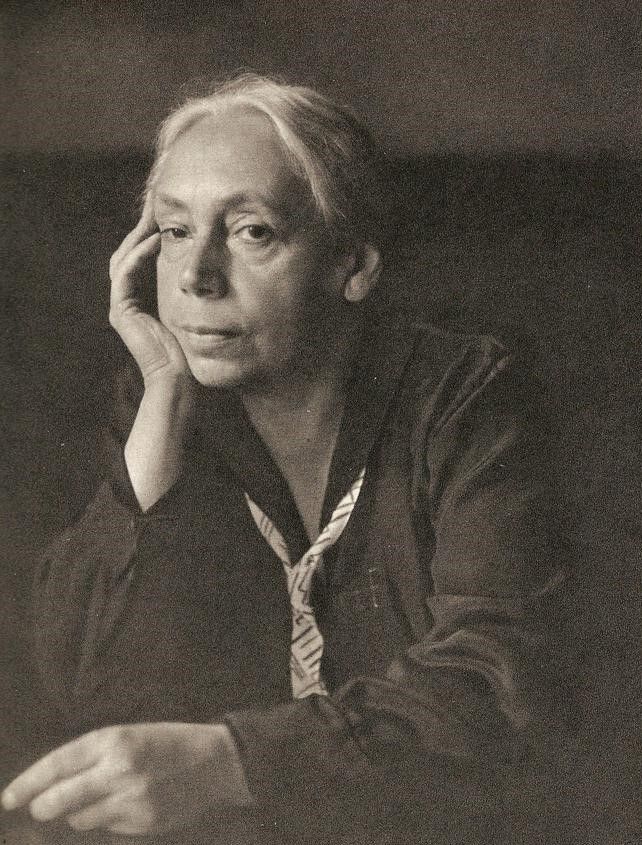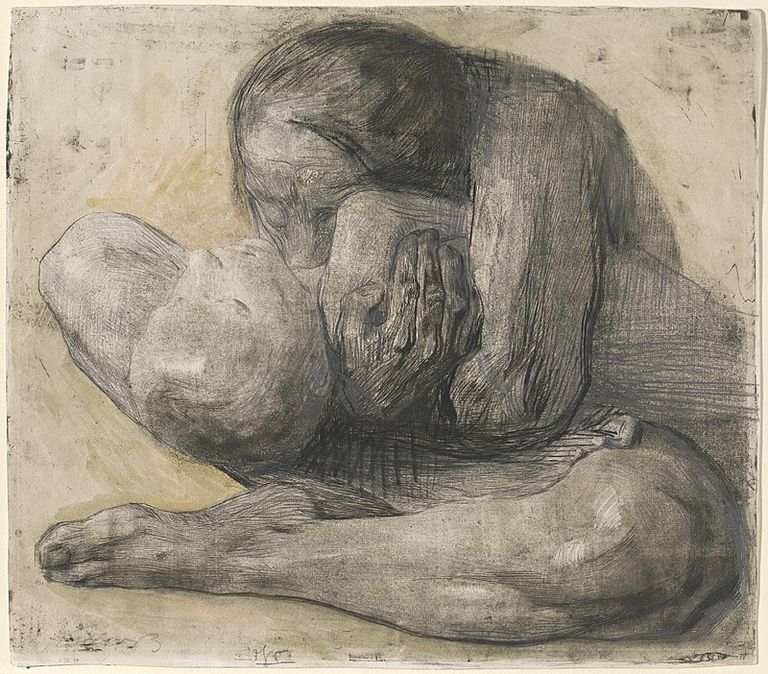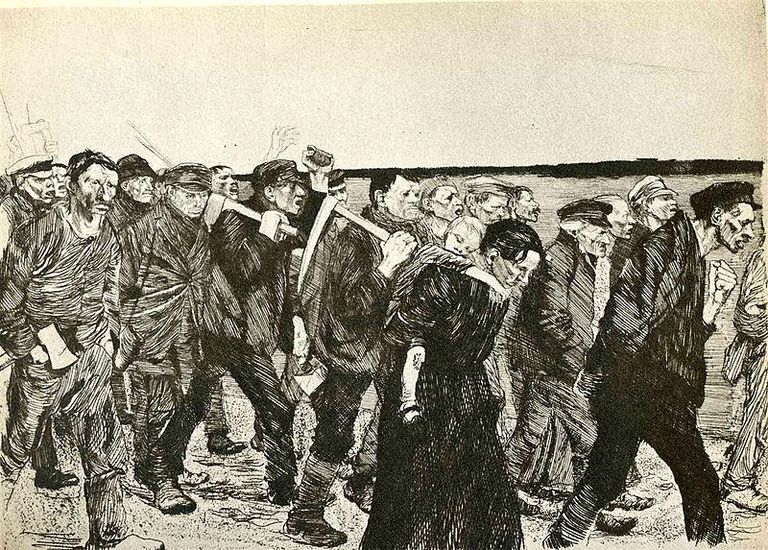
“I felt that I have no right to withdraw from the responsibility of being an advocate. It is my duty to voice the sufferings of men, the never-ending sufferings heaped mountain-high.” - Käthe Kollwitz
Born on July 8th was the fifth child of the Schmidt's, Kollwitz, née Schmidt, also she is a German artist who is well-known for her woodcuts but who also produced paintings, prints, sculptures, and etchings. At an early age, Kathe's father began to notice her aptitude. Even though it was uncommon for females to succeed men, he made the unconventional decision to tutor Kathe. She was able to receive the instruction she did because of his willingness to be flexible.
Her father arranged for her to take her first painting and copperplate engraving classes in Königsberg from artists Gustav Naujok and Rudolf Mauer. These artists were her teachers for five years. After visiting Engadine in 1886, she got to know two realistic writers, Gerhart Hauptmann and Arno Holz. Her passion in this kind of painting was sparked by these two. Following her return from her vacation, she joined in the Berlin Academy for Women Artists' portrait painting program. Kathe first saw Max Klinger's Ein Leben etching series when she was a student of Karl Stauffer. She was greatly inspired by the television series Ein Leben. Emil Meide, a historical subject matter painter, taught her painting classes in 1887.
She began taking studies at The Academy of Women's Arts in 1888, where she studied human anatomy and live models, in addition to painting in her underwear. Kathe started to get quite interested in women's rights and naturalist ideas at this time. She began delving deeper into gender issues and her own artistic style. She would purposefully portray working-class people in commonplace scenarios. It was subsequently revealed that Max Klinger's article on art theory, Malerei und Zeichnung (Painting and Drawing), served as her source of inspiration for this topic. Her drive to investigate depictions of the dark side of life was bolstered by this essay, as was her desire to produce graphic art.

Kathe wed Dr. Karl Kollwitz in 1891. These two were modest individuals who desired a simple existence. They moved into a small apartment and stayed there for the next fifty years, till the summer of 1943. Hans Kollwitz (1892–1971) and Peter Kollwitz (1896–1914) were their two children. Peter, Kathe's son, volunteered in Belgium at World War 1's initial outbreak. Sadly, Peter passed away soon after at the young age of 18. For Kathe, this was devastating. Through her artwork, she conveyed her sorrow over her son's passing. She and her son created woodcuts of the fallen troops and other images. These shows completely changed the world. She had such a dreadful way of expressing grief. She created these woodcuts, and it was amazing how she captured the expressions of these people and the woodgrain. You genuinely experience her grief.
It was around this period that Kathe Kollwitz turned pacifist. Some of her most poignant pieces were inspired by her longing for a better world and the anguish of losing her kid. She produced a great deal of anti-war art, but it wasn't what you might expect. She concentrated on the individuals and the effects on them. She provided insight into the struggles that go on behind the scenes. She aimed to elicit strong feelings from viewers and demonstrate the actual impact of global events.
Kathe Kollwitz portrays reality as it is. She peels back the layers to expose what a lot of people are too scared to show. I believe that another factor in her anti-war success was the way she broke through the layers. Kathe portrays the working class at home, while others concentrate on what is immediately in front of them, such as pieces that express their disdain for the government or pictures of people fighting.

This, in my opinion, was able to make a different impact on the world. She was not just a fantastic artist but also a phenomenal person. Her life's work has been to assist others. She and her spouse both dedicated the latter years of their lives to improving the world. Despite having the potential to earn a large income, Dr. Karl Kollwitz, an exceptionally intelligent physician, treated hundreds of patients for free. He didn't give a damn if it was because they couldn't afford it or because the German government wouldn't treat them. He thought that everyone ought to be looked after.
I hope Kathe Kollwitz's life and contributions can serve as an inspiration to you. She made an impact while doing what she liked. The world would be a better place if we all possessed this smart woman's perspective to some extent. hundreds of patients admitted at no cost. He didn't give a damn if it was because they couldn't afford it or because the German government wouldn't treat them. He thought that everyone ought to be looked after.

:::Discord:::Twitter :::

Congratulations, your post has been upvoted by @dsc-r2cornell, which is the curating account for @R2cornell's Discord Community.
Enhorabuena, su "post" ha sido "up-voted" por @dsc-r2cornell, que es la "cuenta curating" de la Comunidad de la Discordia de @R2cornell.
Upvoted. Thank You for sending some of your rewards to @null. Get more BLURT:
@ mariuszkarowski/how-to-get-automatic-upvote-from-my-accounts@ blurtbooster/blurt-booster-introduction-rules-and-guidelines-1699999662965@ nalexadre/blurt-nexus-creating-an-affiliate-account-1700008765859@ kryptodenno - win BLURT POWER delegationNote: This bot will not vote on AI-generated content